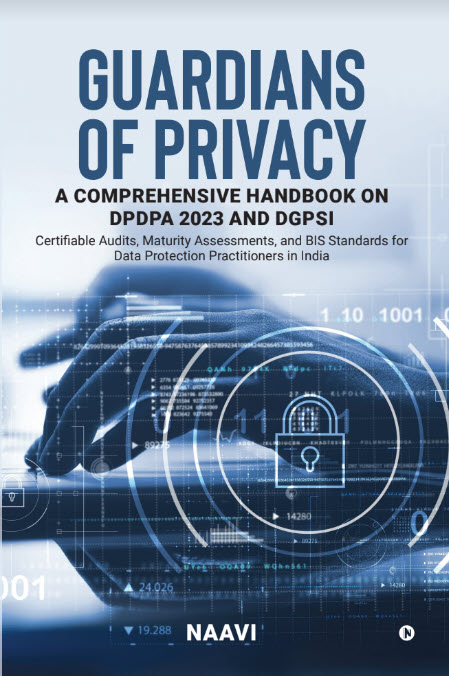(This is a continuation of the series of articles on this subject)
Article1 : Article 2 : Article 3: Article 4 : Article 5
(Easy to Read copy of the Bill)
What’s in It for Business?
The first impression about a new and improved “Consumer Protection Act” set to come into India with the likely passage of the Consumer Protection Bill 2015 in the coming Parliament session is that it is meant for activists and lawyers and of course the small set of vigilant consumers.
However it must be remembered that it is one of those consumers who want a strict Consumer Protection Law who is also the proprietor or business owner who is at the receiving end of a strong Consumer protection legislation. There is no need to presume that he is interested always in cheating the customer and make money. After all all businessmen are not dishonest and greedy. The new Consumer Protection Bill 2015 (CPA2015) will therefore be of great interest to the businessmen and particularly those professionals working in large business houses who conduct business offline and online. It is not only relevant for the Hindustan lever or Nestle or Colgate or Pathanjali, but also to Flipkart, Snapdeal, Amazon and others.
We shall therefore look at the CPA2015 from the “Compliance” angle and try to identify some focus areas for the business. (Refer to the copy of the Act here whenever needed).
Penalty
Let us first look at the “penalty” clause in the Act.
As per Clause 79 of the CPA 2015,
(1) Where a trader or a person against whom a complaint is made or the complainant fails or omits to comply with any order made by the District Commission, the State Commission or the National Commission, as the case may be,
such trader or person or complainant shall be punishable with imprisonment for a term which shall not be less than one month but which may extend to three years,
or with fine which shall not be less than ten thousand rupees but which may extend to fifty thousand rupees, or with both
(2) Notwithstanding anything contained in the Code of Criminal Procedure, 1973, the District Commission or the State Commission or the National Commission, as the case may be,
shall have the power of a Judicial Magistrate of the first class for the trial of offences under this Act, and on Conferment of such powers, the District Commission or the State Commission or the National Commission, as the case may be, shall be deemed to be a Judicial Magistrate of the first class for the purpose of the Code of Criminal Procedure, 1973.
(3) All offences under this Act may be tried summarily by the District Commission or the State Commission or the National Commission, as the case may be.
It is to be noted that there is both a Civil and Criminal liability attached to non-compliance and the authorities entrusted with the responsibility for adjudication have the magisterial powers and take discussions on a summary basis. The scope for dragging the case and harassing the complainant is therefore limited and businesses cannot take the consequences lightly.
Product Liability
Chapter VI of the Bill states that the “manufacturer” or “producer” of product shall be liable for any product liability action if the claimant establishes all of the following by a preponderance of the evidence.
(a) the product contains a manufacturing defect or there is a deviation from manufacturing specifications;
(b) the product is defective in design;
(c) the product failed to contain adequate instructions of correct use to avoid danger or warnings of the improper/incorrect use;
(d) the product did not conform to an express warranty with respect to the product made by the manufacturer or product seller;
(e) the defendant was the manufacturer of the actual product that was the cause of harm for which the claimant seeks to recover compensatory damages; and
(f) the dangerous aspect of the product was the proximate cause of the harm suffered by the claimant.
The Product Seller will be liable for product liability action in the following circumstances.
(i) the product seller exercised substantial control over the aspect of the design, testing, manufacture, packaging, or labelling of the product that caused the alleged harm for which recovery of damages is sought
(ii) the product seller altered or modified the product, and the alteration or modification was a substantial factor in causing the harm for which recovery of damages is sought
(iii)the product seller made an express warranty as to such product independent of any express warranty made by a manufacturer as to such product, such product failed to conform to the product seller’s warranty, and the failure of such product to conform to the warranty caused the harm complained of by the claimant;
(iv) the claimant is unable, despite a good faith exercise of due diligence, to identify the manufacturer of the product
(v) the manufacturer is not subject to service of process under the laws of the State; or
(vi) the court determines that the claimant would be unable to enforce a judgment against the manufacturer:
From the above, it can be deduced that sellers of products imported from abroad such as the ubiquitous Chinese products could be liable for product liability since either the manufacturer cannot be identified or cannot be sued.
A Product seller other than the manufacturer may also be liable on the basis of negligence if the seller did not exercise reasonable care in assembling, inspecting or maintaining the product or in passing on warnings or instructions from the manufacturer about the dangers and proper use of the product (Provided that failure to exercise such reasonable care was a proximate cause of the harm).
It is to be noted that a “Complaint” under the CPA 2015 may be made for
a) Unfair Trade Practice
b) Defects in the product or Deficiency of Service
c) Excessive charging
d)Unfair contract entered into
and sale of hazardous and unsafe products as well as violation of safety standards if any.
Any act of withholding relevant information from the consumer could be considered as a “Deficiency” of service and any statements made on the internet or website could be considered as “advertisement”. Any aspects of warranty or promise contained in the communication with the consumer which is known to be untrue would constitute an “Unfair Trade Practice”.
The possibilities of deliberate and not so deliberate mis-statements normally arise because many products require the additional services of “Installation” and “Demo” which are some times handled by third party contractors who have no loyalty either to the brand or to the selling outlet and the product liability could arise out of the actions of these “agents”.
The manufacturers as well as the reputed retailers who have their own brand positioning need to ensure that the agents representing them are well trained and informed to avoid any type of mis-communications or over charging or damage or harm to the consumer at the time of installation.
The retailers conducting “Festival Sales” and the online companies running special campaigns such as “Big Billion Sales” often hire temporary employees during the peak sales time who are untrained and unprofessional. Actions of such persons could create liabilities to the suppliers if properly pursued by a vigilant consumer.
It is also essential for all manufacturers and suppliers to put in place a proper “Grievance Redressal Mechanism” which could act as a cushion to soften any adverse impact of deficient service/defective product.
The CPA2015 suggests its own mediation process but it is possible for the product manufacturers/sellers to squeeze in a dispute resolution mechanism before the mediation process or action from the dispute redressal agencies envisaged under the Bill can be invoked. This is mandatory for the online service providers under ITA 2000/8 and should be useful for others too. Such alternate dispute resolution mechanism can be an “Ombudsman” or “Mediation” or “Arbitration”.
If a consumer gets a reasonable redressal of grievance under these service provider’s dispute resolution mechanisms, the adverse impact of the mediation as envisaged under the Bill could be reduced.
Naavi





